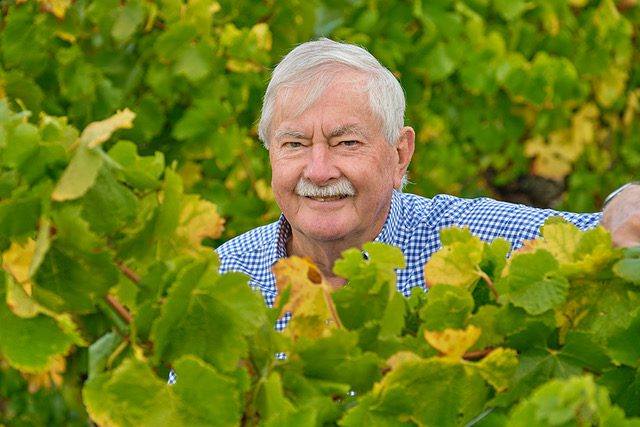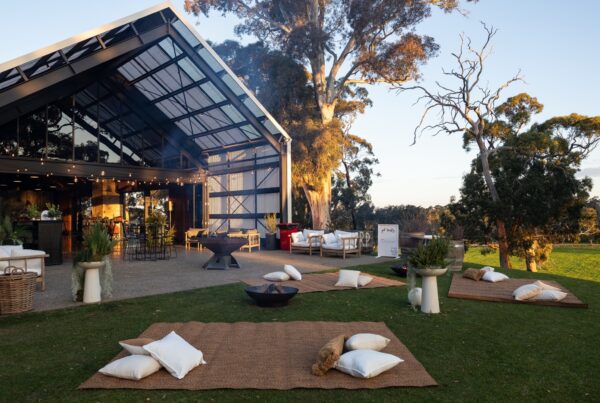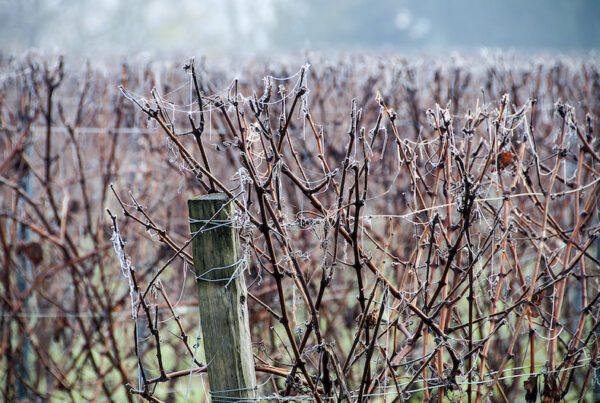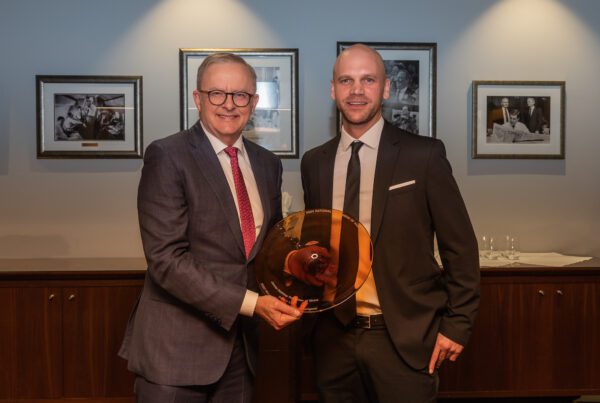
The Tiers Vineyard Old Block in the Piccadilly Valley is 41 years old, planted in 1980.
The oldest planting at The Tiers was planted the year before in 1979 and was pulled out in 2003 to make way for the new Tiers 1.5m planting of Dijon clones on rootstock at the high vine density of 1.5 metres between rows and 1.5m metres between vines in the row (4,444 vines/hectare).
The irony of this is that having carefully chosen the University of California Davis Chardonnay clone FPS 1A, their oldest clone called Chardonnay OF when it arrived in Australia in 1969, we have unwittingly pulled out the only authentic block of OF we had planted.
The rest of Tiers was planted in 1980 and 1981 with rootlings sold to us as OF clone.
The Australian Wine Research Institute have genetically typed the plantings related to Davis FPS 1A (OF) and found a family relationship between the Gingin clone shipped to Western Australia in 1954 and the OF and Mendoza clones shipped to South Australia in 1969.
The Old Tiers clone was found to not relate to this Davis family of clones nor to any of the other Chardonnay clones tested.
It is a very different Chardonnay clone of unknown origins, but we know it makes very good wine.
Its origins remain a challenge for future genetic research by the AWRI.
The Old Block of Tiers was planted in 1980 on own roots at the then radical vine spacing of 2.1 metres between rows and 1.5 metres between vines in the row (3,175 vines/hectare).
At 41 years the Old Block vines are beginning to show their age.
The heads of the vines show the scars, lumps and bumps and the atrophied trunks expected of vines undergoing the annual amputations called pruning for 41 years.
The life-giving sap from the roots has to follow a tortuous path to the new shoots emerging in the spring and the vine’s arteries are sclerotic in direct analogy to a human at twice the age of 41 years.
Again, there is irony in this vine ageing process because as the vines’ capacity and productivity have diminished with age, the quality of the grapes and the wines they make has increased inexorably year on year.
These old vines are now too valuable to lose to the deprivations of time and even if we replanted, we would have to wait decades to achieve the same wine concentration and quality.
So, the Tiers Old Block represents both an irony and a dilemma.
The questions are how do we rejuvenate these precious senior citizens and give them the longevity to bridge time until the 2003 1.5mX1.5m Dijon clone block achieves sufficient age to produce grapes of equivalent quality?
Also, when do we start replacing in small sections, the Old Block with grafted vines on closer spacing of the wonderful unknown clone from that block?
The answer to the first question is we are giving the old vines a hip replacement and heart valve replacement at the same time.
Grape vines share in common with our native Eucalypts the habit of burying buds in the expanding trunk as they grow.
These are called adventitious buds and are an evolutionary defence mechanism against the loss of the new shoots to fire, frost and all of the other deprivations nature invents.
When the new foliage is lost the plant stirs these buried buds into growth and although weakened the vine lives for another vintage.
We are taking advantage of the random appearance of these new shoots from old-buried buds to rejuvenate the old vines.
Normally as they sprout from near the base of the vine, we would cut them off the trunk as they usually don’t bear fruit and are competitive for the root supplies of water and nutrient.
Now they are a valuable resource as we select the strongest and bring up a new trunk alongside the old sclerotic trunk to the fruiting wire.
After two or three seasons the new uninhibited healthy trunk is strong enough that we can carefully amputate the old trunk above the starting point of the new.
We have a vine with the old root system and a new trunk.
Productivity returns without detriment to grape and wine quality.
O’ that we humans had adventitious buds!









Recent Comments